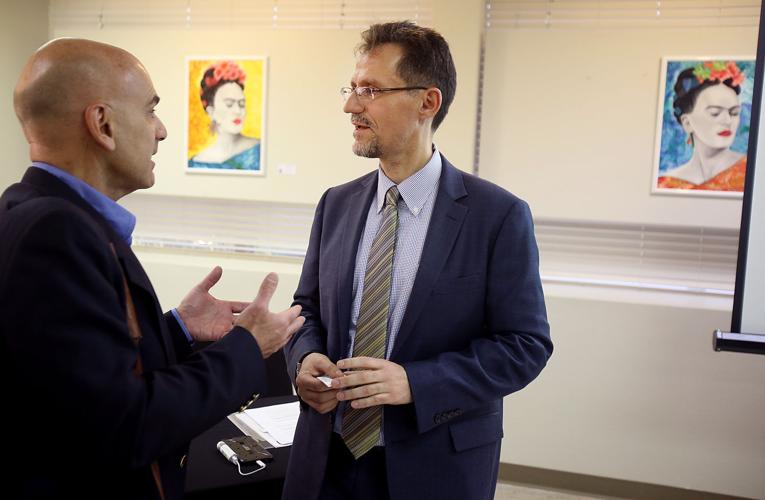Arizona is in a great position to take advantage of the Trans-Pacific Partnership trade agreement, thanks to its high degree of integration with Mexico and its location near the seaports of Los Angeles and Long Beach, said a top Mexican official.
Kenneth Smith Ramos, head of the Trade and NAFTA Office of the Ministry of the Economy of Mexico, in Washington, D.C., visited Southern Arizona this week, speaking at the Fresh Produce Association of the Americas summit in Tubac and at the Consulate of Mexico in Tucson.
The Trans-Pacific Partnership — a trade deal involving the United States, Australia, Brunei, Canada, Chile, Japan, Malaysia, Mexico, New Zealand, Peru, Singapore and Vietnam — would generate access to markets in a region of the world that will grow the most over the next 15 years, Smith Ramos said in Tucson.
“The great beneficiaries of that access to Asia will be the western states of the United States, Mexico and Canada,” he said.
While the United States already has agreements with some of the TPP participants, the deal would give preferential market access to Brunei, Japan, Malaysia, New Zealand and Vietnam.
In 2014, Arizona exported $663 million to Japan, $349 million to Malaysia and $43 million to Vietnam, numbers that should see a rise if the deal is approved, officials said.
Although the agreement has been strongly supported by the Obama administration, its approval by Congress is not assured.
With the presidential primary bringing attacks to international trade from both Democrat and Republican candidates, Smith Ramos said, proponents must do a better job explaining the benefits of trade as well as addressing the negative impacts of a global economy.
“We are shooting at the wrong enemy. In this era of economic uncertainty, you want to find a clear culprit as to what is going on, but when you look at the facts it is hard to make the case that either the U.S. or Mexico would be better off if we did not have NAFTA,” he said.
Since the North American Free Trade Agreement between the United States, Mexico and Canada came into effect in 1994, Arizona’s exports to Mexico have increased by almost 400 percent, with more than 100,000 jobs in the state depending on trade with Mexico, officials said.
In all, about 6 million jobs in the United States depend on trade with Mexico, which stands at $236 billion in American goods, Smith Ramos said.
Still, it would be naïve to just quote numbers and what is happening on the ground and not recognize the negative feeling surrounding international trade, he said.
“The root of it has to do less with trade,” he said, “then with the drastic technological changes that have taken place in the last 15 years in the world economy and led to changes in many industries.”
As certain regions gain high-tech jobs, others have lost traditional manufacturing positions, and the adjustment is not necessarily as quick as would be required for communities to recover, Smith Ramos said.
Both the United States and Mexico should continue working on providing opportunities when there are impacts of trade, such as worker retraining programs and a safety net for certain kinds of jobs, and by making it clear that economic opportunity increases by working together, he said.
“The feeling is that I lost my job because of a trade agreement, but when you look at the data, it’s not quite true,” Smith Ramos said. “Where have most of the manufacturing jobs that have left the U.S. not to come back gone? They have gone to the one country where the U.S. does not have a free trade agreement.”
It is precisely China that officials are trying to work with, he said, to bring it into the rules of international trade and perhaps at some point into the TPP.
In the meantime, the NAFTA countries should continue to integrate and develop their already impressive supply chains in order to be the most competitive region in the world, officials said, adding that Southern Arizona is ready.
“We are ready to build on our success with a bigger footprint with our partners in Mexico,” said Dennis Minano, chairman of Sun Corridor Inc., Southern Arizona’s main economic development agency.
“To leverage the incredible assets we have, to demonstrate to the world that the Southern Arizona-Sonora region is a binational, world class center of integrated research, manufacturing and supply chain strength,” he said.




